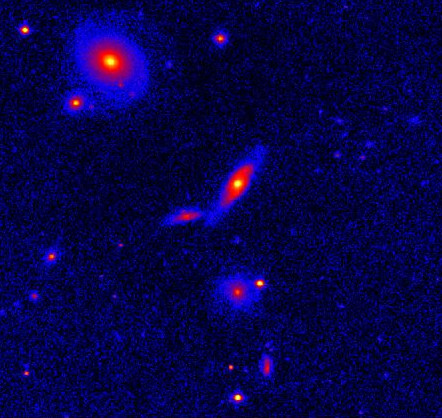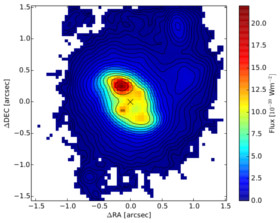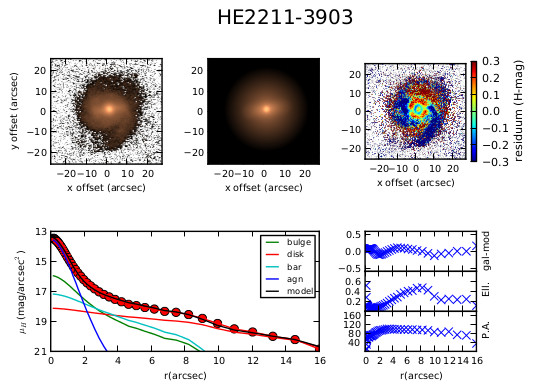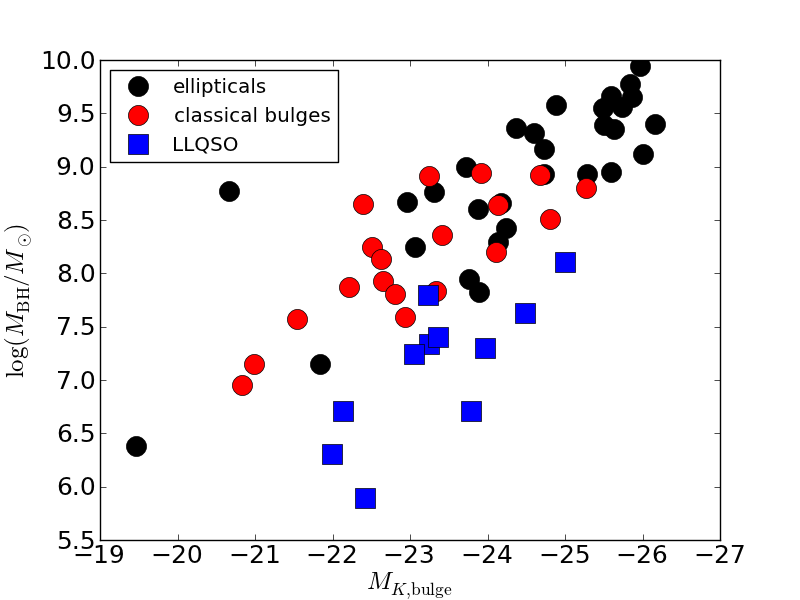Research
 I am member of the research group lead by Prof. Andreas Eckart at the I. Physikalisches Institut of the University of Cologne. Our research is focused on Supermassive Black Holes and their surroundings.
I am member of the research group lead by Prof. Andreas Eckart at the I. Physikalisches Institut of the University of Cologne. Our research is focused on Supermassive Black Holes and their surroundings.
One half of our group is involved in observations of the central Supermassive Black Hole in the center of our Galaxy (Sgr A*).
I am mainly involved in observations of nearby active galaxies, that is, galaxies that show a strong central point source believed to originate from accretion onto their central Supermassive Black Holes (SMBH).
A lot of effort in the last years I spent on the analysis of galaxies from the low-luminosity type-1 QSO sample. It is a subsample of the Hamburg/ESO survey, containing only the closest sources with a redshift limit z=0.06. The galaxies are close enough for detailed structural analysis and we hope to get insight into the details of the feeding mechanisms and/or feedback from the central SMBH.
References:
 We recently started the Close AGN Reference Survey, a collaboration with colleagues from ESO Garching, Potsdam, Paris, and the US. CARS aims to provide the most detailed view on a sample of 40 type-1 AGN in a multi-wavelength approach. CARS is a subsample of the LLQSO sample that I have been working on in the last years. I will be mainly working on the analysis of near-infrared imaging and spectroscopy.
We recently started the Close AGN Reference Survey, a collaboration with colleagues from ESO Garching, Potsdam, Paris, and the US. CARS aims to provide the most detailed view on a sample of 40 type-1 AGN in a multi-wavelength approach. CARS is a subsample of the LLQSO sample that I have been working on in the last years. I will be mainly working on the analysis of near-infrared imaging and spectroscopy.
Link:
 In my recent work, I use the near-infrared integral-field spectrograph SINFONI at the Very Large Telescope in Chile to observe the LLQSO HE1029-1831. With integral-field spectroscopy, we get spectral and spatial information: for every spatial point, we get a spectrum, in which we can e.g. fit emission lines. This helps us to find the distribution and kinematics of gas and stars, but also line excitation mechanisms.
In my recent work, I use the near-infrared integral-field spectrograph SINFONI at the Very Large Telescope in Chile to observe the LLQSO HE1029-1831. With integral-field spectroscopy, we get spectral and spatial information: for every spatial point, we get a spectrum, in which we can e.g. fit emission lines. This helps us to find the distribution and kinematics of gas and stars, but also line excitation mechanisms.
The study on HE1029-1831 is only a pilot study that we hopefully can repeat for a much larger sample. In the particular case of HE1029-1831, we demonstrate the importance of star formation in the central region and its effect on the bulge luminosity that could explain the deviation from expected BH mass - host galaxy relations (see below).
Reference:
 In my master-thesis work, I use the code BUDDA (BUlge-Disk Decomposition Analysis) for the structural decomposition of 20 galaxies from the low-luminosity type-1 QSO sample. The decomposition allows to find hidden substructures, analyze the structural parameters, interprete the luminosities of different stellar and non-stellar components separately. In this work, I also test the reliability of the used code.
In my master-thesis work, I use the code BUDDA (BUlge-Disk Decomposition Analysis) for the structural decomposition of 20 galaxies from the low-luminosity type-1 QSO sample. The decomposition allows to find hidden substructures, analyze the structural parameters, interprete the luminosities of different stellar and non-stellar components separately. In this work, I also test the reliability of the used code.
References:
 Several relations between the mass of the central SMBH and properties of the host galaxy's central spheroid/bulge component (such as luminosity, mass, velocity dispersion) have been found and interpreted as evidence for a co-evolution scenario.
Several relations between the mass of the central SMBH and properties of the host galaxy's central spheroid/bulge component (such as luminosity, mass, velocity dispersion) have been found and interpreted as evidence for a co-evolution scenario.
I used the fit parameters obtained with BUDDA to calculate the bulge luminosities of 20 low-luminosity type-1 QSOs. For those galaxies that black hole masses are available of, I analyze their position in the black hole mass - bulge luminosity relation. I realize that they do not follow published relations for inactive galaxies.
Possible reasons are discussed: Bulges could be overluminous because of recent star formation and resulting younger (and at same mass brighter) stellar populations. Also, undermassive black holes could be a possible explanation. This would have implications on the understanding of the galaxy evolution: Do bulges grow prior to the growth of the supermassive black hole?
Reference:
- A low-luminosity type-1 QSO sample: I. Overluminous host spheroidals or undermassive black holes? (Busch+14)
last updated: March 30, 2015